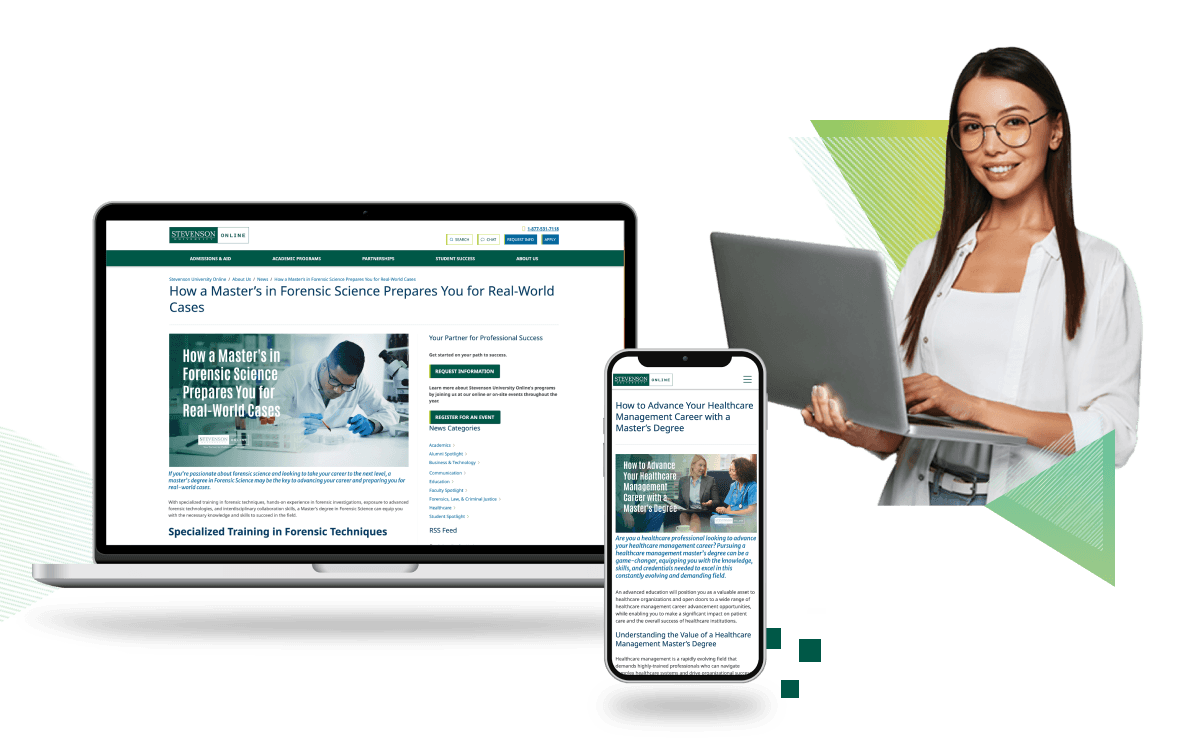
How an online university doubled their new student inquiries with AI-driven SEO
- SEO


Stevenson wanted to drive more inquiries from prospective students searching for information around the kinds of online programs they offered.
While their program pages were generating some inquiries, they weren’t ranking high enough to secure a steady flow of organic leads. And while their blogs generated traffic, almost none of that traffic converted to organic inquiries.
While Stevenson knew they needed to create more content to get more traffic, the challenge was what content to write that would attract prospective students. And with a small marketing team and limited budget, it was difficult to even get the content created in the first place!
Stevenson approached WebMechanix with the goal of creating and publishing search-optimized content that would attract prospective students, with content they would actually want to read, which would encourage them to take the next step in their higher education journey with Stevenson.

After evaluating Stevenson’s current organic presence and website content, WebMechanix noticed three things:
To solve this problem, we implemented a “Tier 2” page approach to content. The big idea was to create content on the blog (“Tier 2”) that would be helpful for a student in the middle of their journey to considering an online degree program.
Next, we would link to the “Tier 2” pages from the program (“Tier 1”) pages and vice versa. This would allow prospective students visiting the program pages to have added-value links they could follow to help with their decision-making process. And blog visitors would more likely be in the market for an online degree program, then be able to immediately learn more about Stevenson’s programs.
So how did we execute this strategy to make the biggest impact? We started by focusing on the “leading horses” — the top 6 programs for which Stevenson wanted to generate applications.
We then identified the primary keywords that we needed to rank those pages for, followed by related secondary keywords that would be the target keywords for the blog posts. During this phase, we also observed what content was already ranking for those keywords to get a baseline of what kind of content we would need to publish to compete.
In the 5 month period after we published the new content, we saw:
Because our blog content was actually relevant, we started generating inquiries from them directly. And because our program pages were more helpful and content-rich, rankings, visitors and conversions all went up.
Needless to say, Stevenson’s marketing team was thrilled with the results. We’re now doubling down on this strategy for the rest of their programs and continuing to build out helpful content to support their prospective students’ journey.